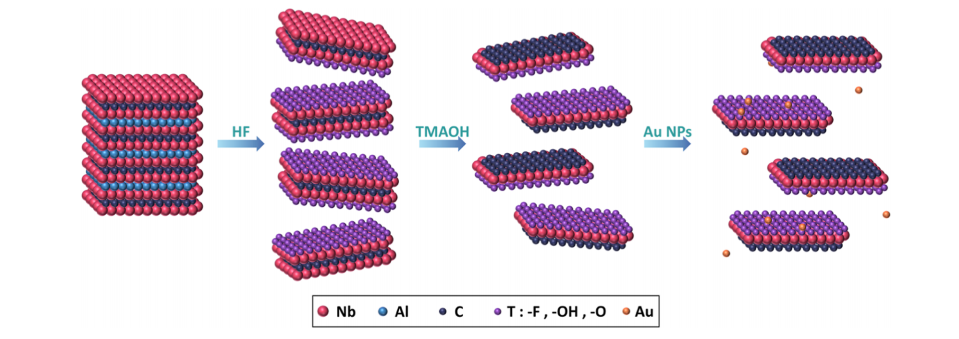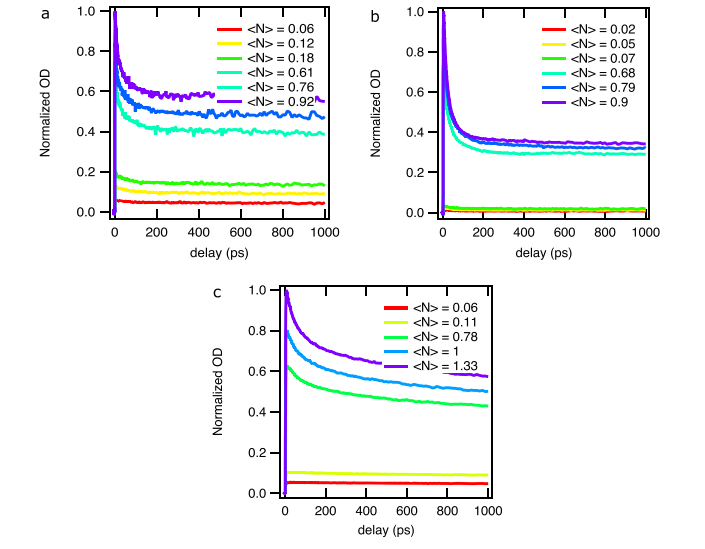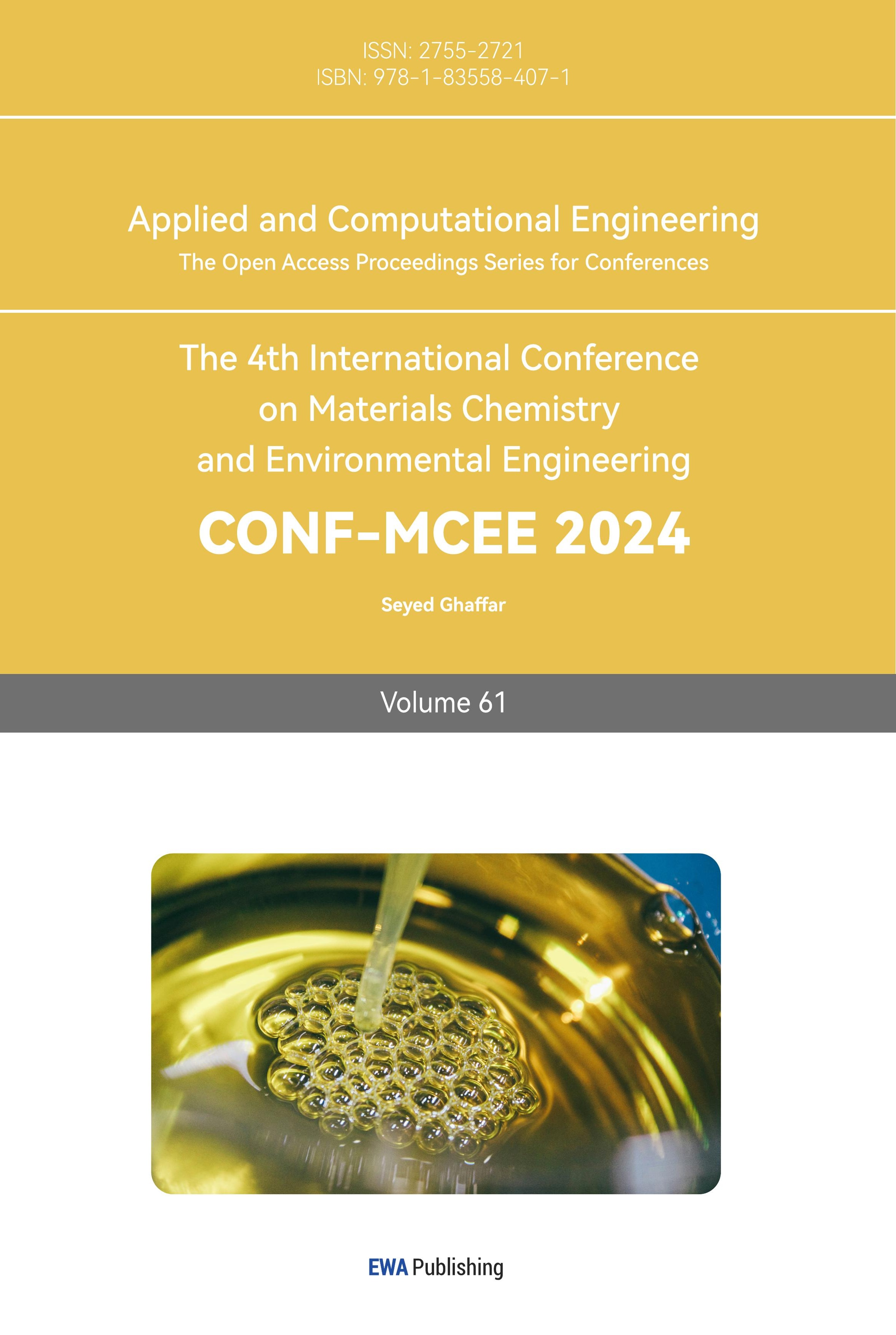1. Introduction
In the case of the use of fossil energy prospects are greatly limited, the research into clean energy, especially solar photovoltaic cells, is greatly encouraged. And one of the most significant research and application prospects is the 3rd generation of solar photovoltaic cells, also known as multi-exciton photovoltaic cells, as it brings lower cost and higher efficiency. However, one of the primary issues that has always made it challenging to produce multi-exciton photovoltaic cells successfully is the issue of Auger Recombination [1].
In order to provide reliable data support and reference for subsequent researchers, after in-depth study and research on this problem, the following suppression methods for auger complexes were screened, summarized and analyzed, and two more effective suppression methods were obtained and summarized as follows.
2. Comparative analysis of Interfacial Engineering and Gradient Alloying
2.1. Interfacial Engineering
2.1.1. Principle and process. This study utilizes a novel MXene type called Nb2CTX-MXene, which has shown great potential in various applications. MXene refers to a class of materials known as early transition metal carbides or carbonitrides, which have attracted significant attention in recent years due to their unique properties. These materials are produced by selectively removing the A element from MAX phases, where M represents an early transition metal, A represents an element such as aluminum or silicon, and X represents carbon or nitrogen.
The production of MXene can be achieved through different methods, including the molten salt method, wet etching with hydrofluoric or hydrochloric acid, or the electrochemical procedure. These methods allow for the removal of the less robust M-A bonds, resulting in the formation of MXene with improved properties. The resulting 2D materials possess a high surface area and conductivity, making them highly adaptable and modifiable [2].
In the context of perovskite solar cells (PSCs), MXene has gained significant attention as a potential material for improving stability and efficiency. By applying Nb2CTX-MXene to the interface of SnO2 layers, this study aims to passivate interfacial flaws and enhance charge transmission. This approach offers a novel strategy to address the challenges associated with interfacial defects in PSCs, ultimately leading to improved device performance.
Overall, the unique characteristics of MXene, such as its adaptability, modifiability, high surface area, and conductivity, make it a promising candidate for various applications, including PSCs. The use of Nb2CTX-MXene in this study demonstrates its potential for enhancing charge transmission and addressing interfacial flaws, thereby contributing to the advancement of PSC technology.
A schematic representation of the Au@Nb2CTx-MXene manufacturing process is shown in Figure 1.

Figure 1. Au@Nb2CTx-MXene manufacturing process schematic illustration [3].
2.1.2. Performance. The efficiency and stability of perovskite solar cells (PSCs) based on stannic oxide (SnO2) can be adversely affected by imperfections at the interface of charge transport layers. These imperfections can lead to significant charge accumulation and poor charge transferability. In this study, a novel type of MXene called Nb2CTX-MXene is employed to passivate interfacial defects and improve charge transport at the interface of SnO2 layers.
Nb2CTX-MXene plays a crucial role in enhancing the conductivity of PSCs. It also helps reduce tin vacancies within the interstitial void of the SnO2 layer, thereby reducing defect density and aligning the bandgap. To further enhance the performance of the device, Au@Nb2CTX-MXene is introduced by decorating Nb2CTX-MXene with gold nanospheres. These nanospheres help regulate the tensile strain of the perovskite material and prevent Auger recombination.
The modified device incorporating Au@Nb2CTX-MXene exhibits impressive results, with a very high open-circuit voltage of 1.215 V (equivalent to an energy level of 1.60 eV) and a remarkable power conversion efficiency (PCE) of 23.78%.
Furthermore, the research demonstrates the long-term stability of the modified PSCs. The unencapsulated devices maintain over 80% of their initial efficiency after 500 hours of continuous operation under one sun illumination. Additionally, they retain over 90% of their initial PCE values after 1000 hours of storage in the air with a relative humidity of 40%.
Overall, this study presents a significant advancement in the development of highly reliable, stable, and commercially viable PSCs using MXene. The use of Nb2CTX-MXene and Au@Nb2CTX-MXene not only improves charge transport and passivates interfacial defects but also enhances the overall performance and long-term stability of the devices. These findings contribute to the progress of PSC technology and pave the way for the future fabrication of efficient and durable solar cells.
2.2. Gradient Alloying
2.2.1. Introduction. This study focuses on comparing the photophysical properties of three different types of InAs core/shell QDs. These QDs are semiconductor nanocrystals with optoelectronic properties that are dependent on their size. They have been extensively studied for use in various applications such as photovoltaics, color conversion, lasers, LEDs, and photodetection. QDs can be synthesized using a solution-processing method, which allows for the development of large-area and flexible optoelectronic devices. While II-VI and IV-VI QDs have been well-studied, there is still room for improvement in the synthesis of III-V QDs.
InAs is a III-V semiconductor with a bulk band gap of 0.35 eV and a large exciton Bohr radius of ax=31 nm, making it suitable for NIR applications. However, pure InAs QDs have a low PLQY due to quick surface trapping caused by inadequate surface passivation and oxidation. Additionally, Auger recombination is a significant issue that affects the performance of QD lasers and LEDs at high driving currents. The biexciton Auger lifetime is about 50 ps, and higher-order nonradiative processes like the Auger process remain effective.
To improve the Auger lifetimes of InAs core/shell QDs for optoelectronic applications, band engineering techniques must be developed and the core/shell interfacial layer must be enhanced. Recent advancements in the understanding of the precursor dynamics of III-V QDs provide insights for future performance improvements.

Figure 2. Band engineering techniques in InAs-based quantum dots (QDs).
The top row displays the heterostructures' composition, while the lower panel illustrates the corresponding band alignment. Addition of an outer CdS shell to InAs/CdSe/CdS core/shell/shell (CSS) QDs enhances carrier confinement, while maintaining a quasi-type-II band alignment. In InAs/CdSe S-/CdSe S-/CaSs QDs, alloying an intermediate layer leads to a spatial distribution of electrons and holes, facilitating improved charge separation and transport within the QDs [4].
2.2.2. Research method. In this study, InAs quantum dots (QDs) were coated with a lattice-matched CdSe shell to create InAs/CdSe core/shell QDs. To achieve a thick shell without altering the 0.9-1 eV absorption/photoluminescence (PL) wavelength region, relatively small InAs QDs were used. Thicker shells exhibit longer Auger lifetimes than thinner shells due to a greater degree of charge carrier delocalization from the core into the shell. Figure 3 illustrates that by controlling the kinetics of the shell precursor, it is possible to form either sharp InAs/CdSe/CdS core/shell/shell or InAs/CdSeS-x/CdS core/gradually alloyed-shell/shell ODs. Thicker shells have been shown to have superior Auger lifetimes compared to thinner shells.

Figure 3. Evolution of absorbance and photoluminescence spectra of 3.1 nm InAs core quantum dots (QDs) during CdSe shell growth. The red shift observed in both absorption and photoluminescence spectra upon CdSe overgrowth is indicative of quasi-type-II band alignment. Panel (c) and (d) compare the photoluminescence and absorption spectra of three types of QDs, namely InAs/CdSe (CS), InAs/CdSe/CdS (CSS), and InAs/CdSeS1-x/CdS (CaSS). The addition of CdS outer shell in CSS QDs enhances carrier confinement, whereas CaSS QDs have a gradually alloyed-shell structure. These observations demonstrate the tunability of optoelectronic properties through heterostructure engineering in QDs.
2.2.3. Performance. The absorbance and photoluminescence spectra of 3.1 nm InAs core quantum dots (QDs) underwent changes during the development of the CdSe shell. The observed red shift in both absorption and photoluminescence spectra, upon the growth of CdSe over the InAs core QDs, indicates quasi-type-II band alignment. Figure (c) and (d) illustrate the photoluminescence and absorption spectra of different types of QDs, including InAs/CdSe (CS), InAs/CdSe/CdS (CSS), and InAs/CdSeS1-x/CdS (CaSS).
This study presents a band engineering strategy aimed at enhancing the Auger lifetime of InAs core QDs by a factor of two. By producing InAs/CdSeS-x/CdS core/shell QDs with a continuously graded thick CdSeS shell, a smooth transition from the core to the outer shell was achieved, resulting in a deceleration of the Auger process. The biexciton Auger lifetime was measured to be approximately 105 ps, which is a significant improvement compared to the control InAs, CdSe, and Cas QDs with an Auger lifetime of 17 ps. This represents a two-fold increase in Auger lifetime, surpassing the previously reported best estimate for InAs QDs [5].
Research on the effect of the core/shell confinement potential on the biexciton Auger recombination rate in InAs core/shell QDs has revealed that alloying the CdSe/CdS interface can smooth out the carrier confinement potential and enhance the Auger lifespan by a factor of up to five. Power-dependent transient absorption spectroscopy was utilized to investigate the dynamics of single-exciton and biexciton systems. This demonstrated that trap-assisted Auger recombination dominates the single-exciton dynamics. The biexciton lifetime can be retrieved at higher fluences to show the dramatic rise that occurs as the confining potential is smoothed. It takes more than just electron delocalization brought on by shell development to see this improvement. This paper reports the first continuously graded shelling of InAs QDs, which is a step toward InAs-based LEDs and lasers as shown in Figure 4 [5].

Figure 4. Ultrafast spectroscopy of InAs/CdSe core quantum dots (QDs) with different shell compositions.(a) Power-dependent bleach kinetic traces for InAs/CdSe QDs.(b) Power-dependent bleach kinetic traces for InAs/CdSe/CdS QDs.(c) Power-dependent bleach kinetic traces for InAs/CdSeS/Cas QDs, showcasing a neatly graded structure.The slower biexciton decay observed in the graded sample (c) compared to samples (a) and (b) highlights the significant advantages of smoothing the carriers' confinement potential. The probe wavelengths used for the measurements were 0.986 eV, 0.963 eV, and 0.950 eV, respectively.
2.2.4. Results. Using multiexponential fits at each pump fluence, we were able to recover the biexciton Auger lifetime and calculate the lifetimes of the individual processes (Table 1).
Table 1. Auger lifetimes of various materials are summarized [4].
Sample | PL peak (eV) | Biexction Auger lifetime (ps) | PLOV (%) |
InAs/CdSe | 0.94 | 13±0.5 | 20 |
InAs/CdSe/CdS | 0.91 | 17±1 | 24 |
InAs/CdSexS1-x/CdS | 0.94 | 105±3 | 30 |
3. Conclusion
Through extensive literature review, various methods of recombination suppression have been identified. This paper primarily focuses on two methods: modifying growth strain and suppressing auger recombination through Au@Nb2CT-MXene interfacial engineering and gradient alloying in InAs/CdSe/CdS QDs. These approaches significantly improve battery efficiency and service life by employing different suppression techniques.
Several other recombination suppression techniques have been explored, such as the suppression of thermal and Auger processes in p-n junctions based on GalnAs/InAs and InAsSbP/InAs heterostructures, as well as the suppression of Auger recombination in diode lasers utilizing InAsSb/InAsSbP and InAs/GaInAsSb type-II heterojunctions. These are just a few examples among numerous available approaches.
While current efficiencies achieved by quantum dot cells remain relatively low (maximum today: ~17%), there is potential to surpass the Shockley-Queisser limit and achieve significantly higher efficiencies.
In addition to the aforementioned methods, there are still many effective approaches to suppress recombination and enhance the efficiency and service life of multiple exciton solar cells (MESC). These advancements contribute to addressing the increasing demand for clean energy while ensuring environmental protection.
Therefore, in the future application and development of solar photovoltaic cells, although there is ample research space for recombination suppression, the optimistic outlook stems from deepening understanding and continued research in this field, which holds great promise for the advancement of solar photovoltaic technology.
References
[1]. Xu, X., Wang, S., Wang, H., Xu, B., Hu, C., Jin, Y., ... & Yan, H. (2017). The suppression of lithium dendrite growth in lithium sulfur batteries: A review. Journal of Energy Storage, 13, 387-400.
[2]. Klimov, V. I. (2006). Mechanisms for photogeneration and recombination of multiexcitons in semiconductor nanocrystals: Implications for lasing and solar energy conversion. The Journal of Physical Chemistry B, 110(34), 16827-16845.
[3]. Kerr, M. J., Cuevas, A., & Campbell, P. (2003). Limiting efficiency of crystalline silicon solar cells due to Coulomb‐enhanced Auger recombination. Progress in Photovoltaics: Research and Applications, 11(2), 97-104.
[4]. Sagar, L. K., Bappi, G., Johnston, A., Chen, B., Todorović, P., Levina, L., ... & Sargent, E. H. (2020). Suppression of auger recombination by gradient alloying in InAs/CdSe/CdS QDs. Chemistry of Materials, 32(18), 7703-7709.
[5]. Liu, S., Zhou, D., Zhuang, X., Sun, R., Zhang, H., Liang, J., ... & Song, H. (2023). Interfacial Engineering of Au@ Nb2CT x-MXene Modulates the Growth Strain, Suppresses the Auger Recombination, and Enables an Open-Circuit Voltage of over 1.2 V in Perovskite Solar Cells. ACS Applied Materials & Interfaces, 15(3), 3961-3973.
Cite this article
Chu,F. (2024). Research on the assessment of technical methods to suppress auger recombination. Applied and Computational Engineering,61,102-107.
Data availability
The datasets used and/or analyzed during the current study will be available from the authors upon reasonable request.
Disclaimer/Publisher's Note
The statements, opinions and data contained in all publications are solely those of the individual author(s) and contributor(s) and not of EWA Publishing and/or the editor(s). EWA Publishing and/or the editor(s) disclaim responsibility for any injury to people or property resulting from any ideas, methods, instructions or products referred to in the content.
About volume
Volume title: Proceedings of the 4th International Conference on Materials Chemistry and Environmental Engineering
© 2024 by the author(s). Licensee EWA Publishing, Oxford, UK. This article is an open access article distributed under the terms and
conditions of the Creative Commons Attribution (CC BY) license. Authors who
publish this series agree to the following terms:
1. Authors retain copyright and grant the series right of first publication with the work simultaneously licensed under a Creative Commons
Attribution License that allows others to share the work with an acknowledgment of the work's authorship and initial publication in this
series.
2. Authors are able to enter into separate, additional contractual arrangements for the non-exclusive distribution of the series's published
version of the work (e.g., post it to an institutional repository or publish it in a book), with an acknowledgment of its initial
publication in this series.
3. Authors are permitted and encouraged to post their work online (e.g., in institutional repositories or on their website) prior to and
during the submission process, as it can lead to productive exchanges, as well as earlier and greater citation of published work (See
Open access policy for details).
References
[1]. Xu, X., Wang, S., Wang, H., Xu, B., Hu, C., Jin, Y., ... & Yan, H. (2017). The suppression of lithium dendrite growth in lithium sulfur batteries: A review. Journal of Energy Storage, 13, 387-400.
[2]. Klimov, V. I. (2006). Mechanisms for photogeneration and recombination of multiexcitons in semiconductor nanocrystals: Implications for lasing and solar energy conversion. The Journal of Physical Chemistry B, 110(34), 16827-16845.
[3]. Kerr, M. J., Cuevas, A., & Campbell, P. (2003). Limiting efficiency of crystalline silicon solar cells due to Coulomb‐enhanced Auger recombination. Progress in Photovoltaics: Research and Applications, 11(2), 97-104.
[4]. Sagar, L. K., Bappi, G., Johnston, A., Chen, B., Todorović, P., Levina, L., ... & Sargent, E. H. (2020). Suppression of auger recombination by gradient alloying in InAs/CdSe/CdS QDs. Chemistry of Materials, 32(18), 7703-7709.
[5]. Liu, S., Zhou, D., Zhuang, X., Sun, R., Zhang, H., Liang, J., ... & Song, H. (2023). Interfacial Engineering of Au@ Nb2CT x-MXene Modulates the Growth Strain, Suppresses the Auger Recombination, and Enables an Open-Circuit Voltage of over 1.2 V in Perovskite Solar Cells. ACS Applied Materials & Interfaces, 15(3), 3961-3973.









